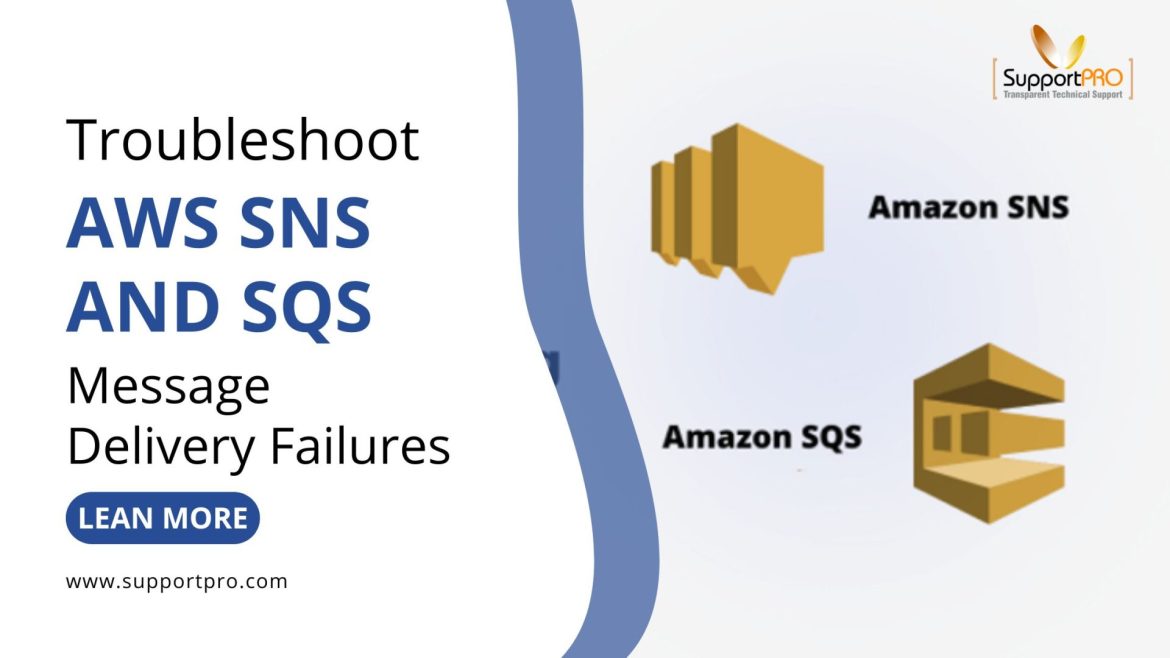Setting up AWS SNS (Simple Notification Service) and SQS (Simple Queue Service) is easy, but they can be very useful for connecting apps and managing a lot of messages at once. Sometimes, though, things don’t go as planned, messages don’t get sent, on the other hand, lines stay empty, or subscriptions get stuck. Also, at times, it can be annoying when you don’t know what the problem is.
The good news is that once you know where to look, most of these problems are easy to fix. We will talk about the most common reasons why SNS messages might not get to SQS in this guide. These include confirmations of subscriptions and IAM rights, as well as Dead-Letter Queues (DLQ), CloudWatch monitoring, and even region mismatches. This is like a step-by-step guide to getting your messages to run again.
Resolving Issues with SNS and SQS Message Delivery
First, use the AWS console to verify the SNS subscription. Please first access the AWS console to verify the query.
A. Verify SNS → SQS Subscription:
1. First go to SNS and then Subscriptions in the AWS Console. Further check and confirm that the subscription status is “Confirmed.” For example, if “PendingConfirmation” seems, the mails won’t be sent.

B. Verify IAM Permission
From the AWS services menu, go to IAM . Navigate to SQS and then select Your Queue and further select the Access Policy.
Check and confirm that the policy allows the SNS service to send messages in the queue. By confirming the IAM permissions, we can rule out the main issue in SNS and SQS message delivery.

C. Check Dead-Letter Queue (DLQ):
Also, check to see whether any unsuccessful messages have reached the DLQ if you have one in your SQS. Because this helps verify that delivery attempts are occurring but not succeeding.
Also, you can use the terminal to setup DLQ, as follows
- Open the SQS Console on Amazon and select a line.
- Choose which queue to set up with a DLQ.
- Then click to DLQ Settings. In the left panel, select the Dead-letter queue by clicking on it. Turn on the queue for dead letters.
- You should turn on the queue for dead letters. Also, check to confirm the ‘Enable dead-letter queue’ is enabled. Further, make a new queue or select an existing one to serve as the DLQ.
- Then you should decide on the maximum number of recipients. Put in a number to limit the maximum number of times a message can be received by the DLQ.
- Finally, save the Changes

Furthermore, make sure that no restrictive IAM (Identity and Access Management) policies are blocking message delivery.
Encryption Issues:
When server-side encryption (SSE) is enabled, confirm that SNS has the correct permissions to access the KMS (Key Management Service) Key.

Monitor CloudWatch Metrics
1. Launch the Management Console for AWS.
2. Visit CloudWatch.
3. Select Metrics from the menu on the left. After selecting all metrics, namespaces will appear.
4. Select SNS or SQS To see their analytics.
D. Network & Region Mismatch:
On the other hand, unless a cross-region arrangement is employed, which calls for extra permissions, SNS topics and SQS (Simple Queue Service) queues must be in the same AWS region.
E. Test Using a Brief Message:
Send a test message to your queue using the SNS console. If you resolve the issue, you need to check your publishing application as it may be the source.
To sum up, it can be hard to get SNS and SQS message delivery work as expected sometimes. However a proper checklist would keep you covered to an extent. Most of the time, you can quickly find the cause by checking subscriptions again or reviewing IAM permissions, or further by setting up a Dead-Letter Queue, or by monitoring the CloudWatch metrics, and making sure everything is in the right area.
Finally, each set-up is, of course, a little different. However, do not worry if you get stuck after following these steps. You do not need to figure it out by yourself. Also, our expert team can help you w more information and assistance. We’ll be happy to help you get back on track.
Partner with SupportPRO for 24/7 proactive cloud support that keeps your business secure, scalable, and ahead of the curve.




